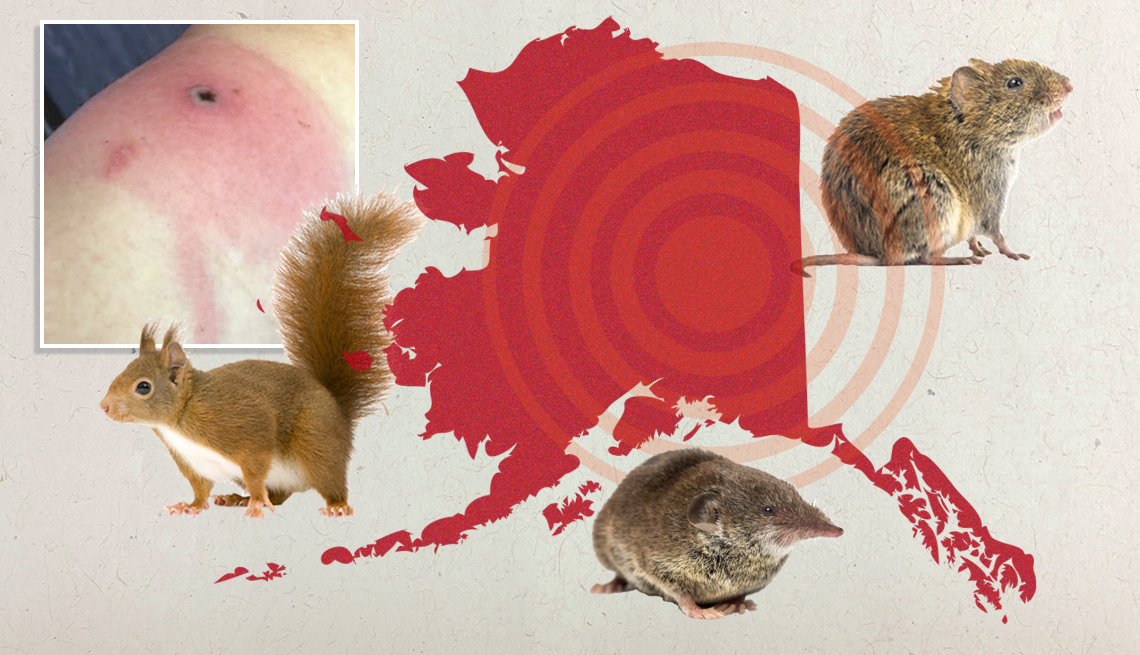
Alaskapox: what you need to know
- Select a language for the TTS:
- UK English Female
- UK English Male
- US English Female
- US English Male
- Australian Female
- Australian Male
- Language selected: (auto detect) - EN
Play all audios:

Alaskapox, a recently identified virus known for causing skin lesions, claimed its first victim in an older man last month. With seven confirmed infections reported since 2015, public health
officials are gathering more information about the virus’ spread and treatment. Here’s what we know so far: WHAT IS ALASKAPOX? Alaskapox causes skin lesions, swollen lymph nodes and joint
or muscle pain, which most patients initially mistake for a spider or other insect bite, according to the Alaska Division of Public Health. It is an orthopoxvirus, related to smallpox and
mpox, both of which cause skin lesions. Nearly all patients had mild illness that cleared up on their own in a few weeks. WHERE DOES ALASKAPOX OCCUR? The first recorded case of the virus
occurred near Fairbanks, Alaska, in 2015. Since then, five additional cases occurred in the same area and a seventh case appeared about 300 miles south in the Kenai Peninsula. The virus has
primarily affected small mammals, with confirmed cases in red-backed voles and shrews in the Fairbanks area. However, evidence suggests the virus may be present in other small animals
throughout the state. Therefore, there may have been additional infections in humans that were never identified, the Alaska Division of Public Health suggests. HOW IS ALASKAPOX TRANSMITTED?
Health officials aren’t sure how the virus can move from animals to people. But they believe that contact with small mammals and — potentially — pets may play a role. The man who died from
an Alaskapox infection lived alone in a wooded area and hadn’t recently traveled. But he reported caring for a stray cat that hunted small mammals and often scratched the patient. He had one
prominent scratch near his right armpit that occurred about a month before he showed signs of the illness. Although human-to-human transmission has not been recorded, we know that other
othopoxviruses can spread by direct contact with lesions. WHAT IS THE TREATMENT PROCESS? The Alaska Division of Public Health doesn’t have information publicly available on the treatment
process. Antiviral drugs are typically prescribed for other orthopoxviruses such as smallpox and mpox. The older man infected with the virus received antiviral medication and antibodies,
leading to a reduction in his rash. Despite this initial improvement, he later developed malnutrition and ultimately succumbed to kidney and respiratory failure. ARE OLDER ADULTS MORE
SUSCEPTIBLE TO SEVERE ILLNESS? While it is not known whether some people are particularly susceptible to severe illness, the older man who died from an Alaskapox infection had a weakened
immune system because of drugs he took for treating cancer. WHAT SHOULD I DO IF I THINK I HAVE ALASKAPOX? Speak with a health care provider and ask them to assess your symptoms. In the
meantime, keep any lesions covered, refrain from touching them, and avoid sharing bedding or other linens with others. Providers who think they have a patient infected with the virus should
contact the Alaska Section of Epidemiology at 907-269-8000 to facilitate testing and treatment.
